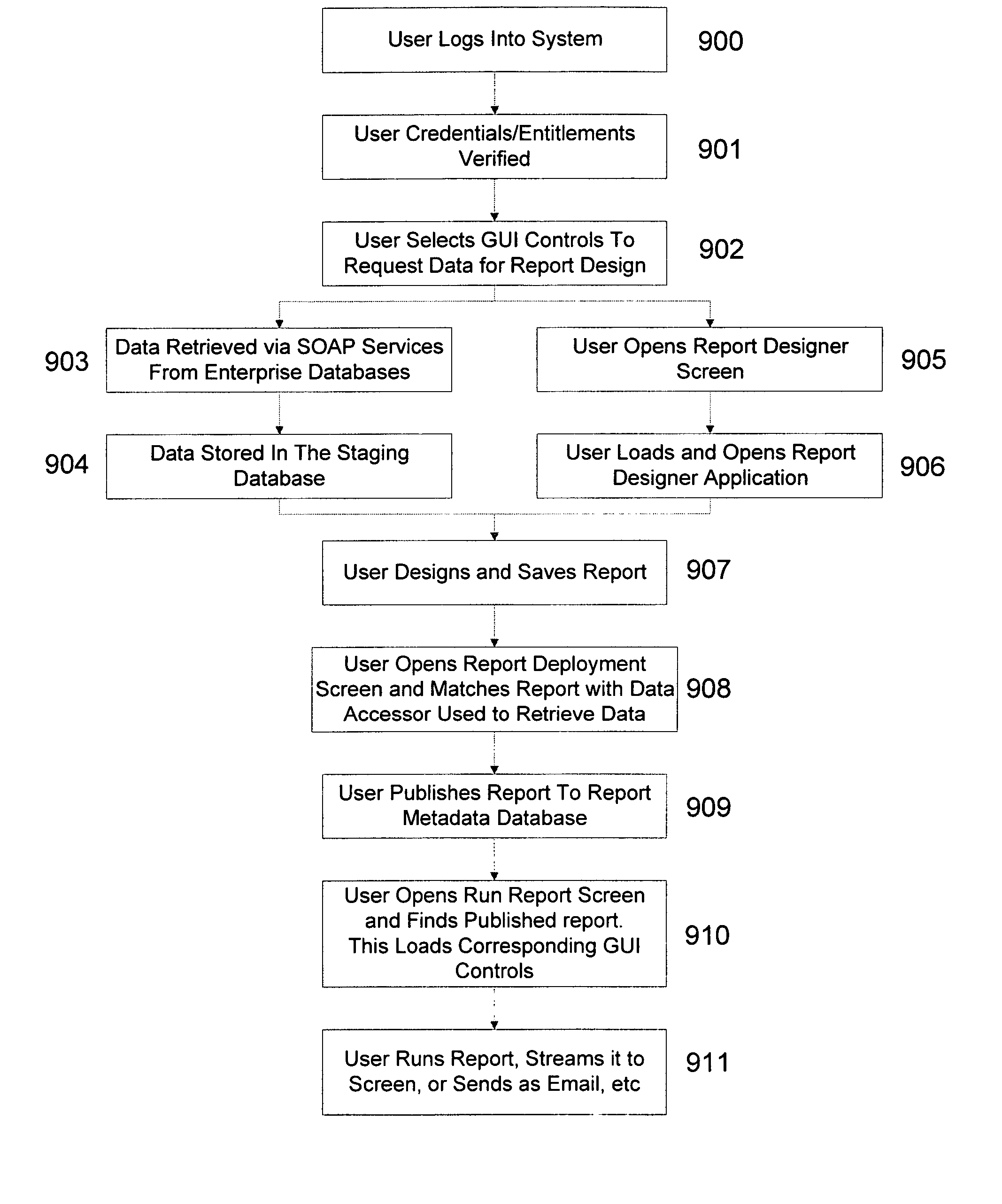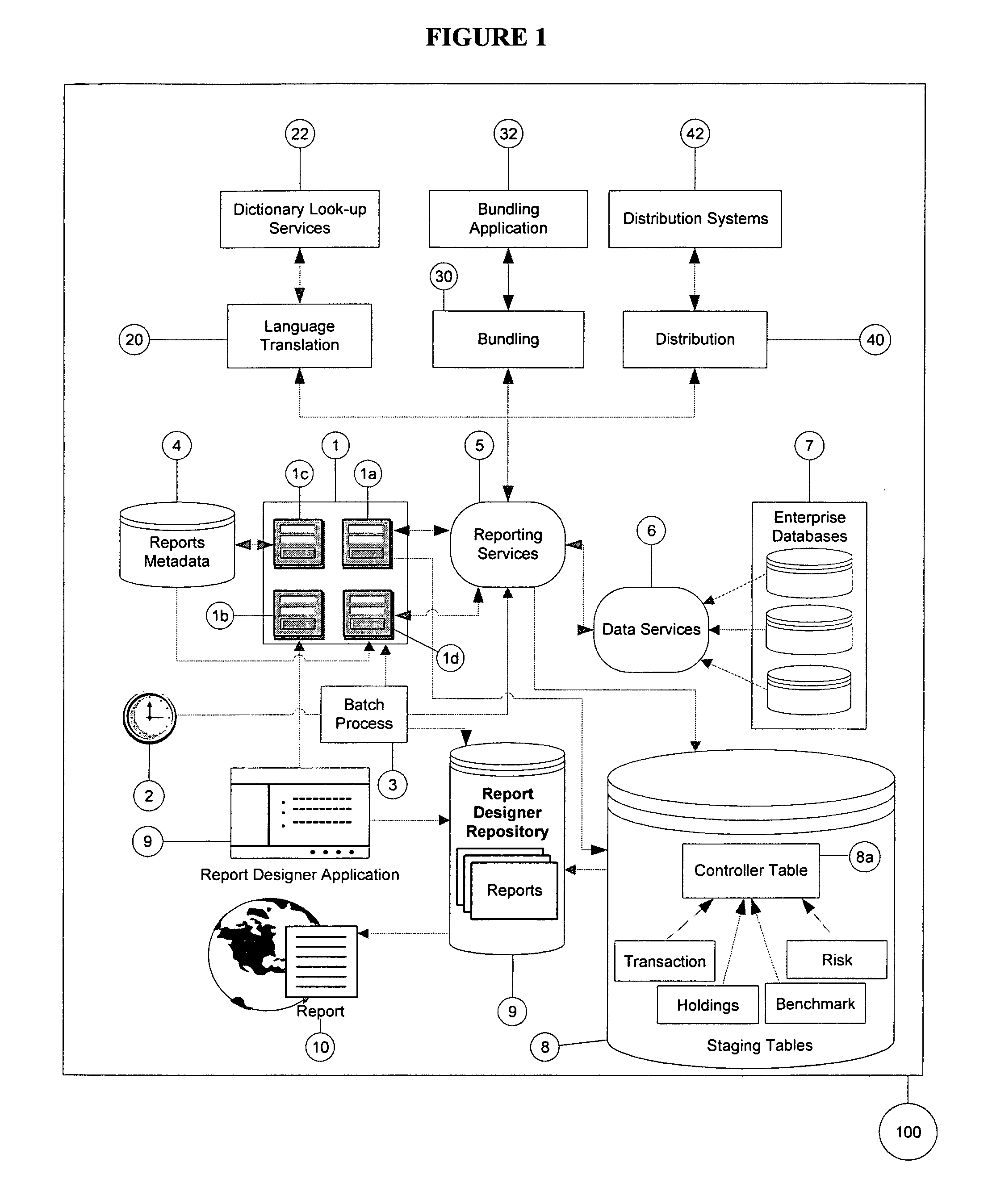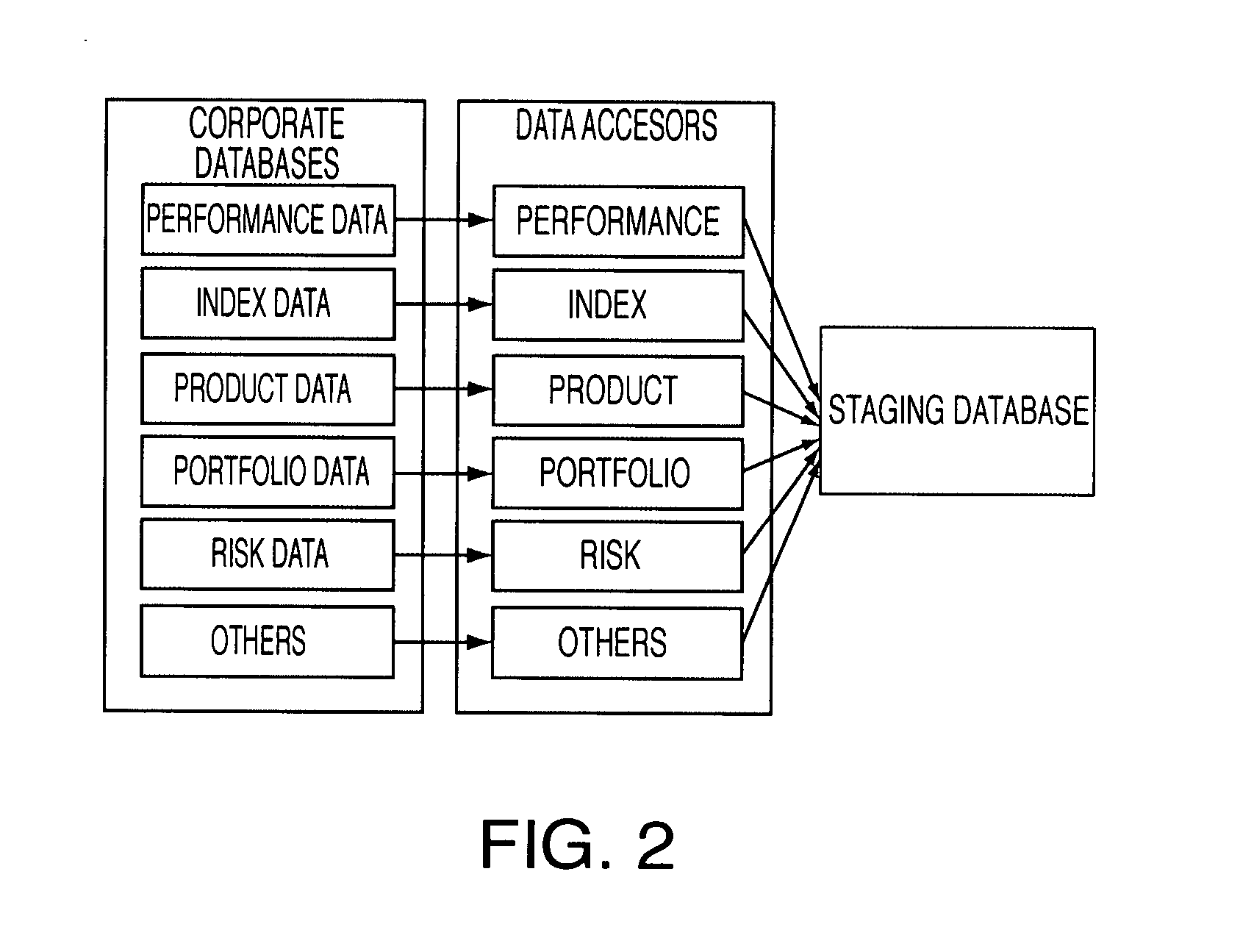Dynamic Accessible Reporting Tool (DART)
a dynamic accessible and reporting technology, applied in the field of information technology systems, can solve the problems of inability of applications to carry out direct queries of enterprise databases, restricted access to such databases, and inaccessibility and retrieval, and achieve the effects of increasing available data points, shortening turn-around time, and increasing cos
- Summary
- Abstract
- Description
- Claims
- Application Information
AI Technical Summary
Benefits of technology
Problems solved by technology
Method used
Image
Examples
Embodiment Construction
[0032]FIG. 1 is a diagram of a workflow-based and metadata-driven reporting system 100 according to various embodiments of the present invention. The components of system 100 may be implemented as an architecture of one or a number of distributed networked computing devices, such as PCs, servers, workstations, etc., programmed to retrieve data, design reports, extract report metadata and run reports by users of the system 100. A user accesses the system 100 through a client terminal. The client terminal may be implemented, for example, as a computing device, such as a PC, laptop or workstation, in communication with the system 100 components via a data network (not shown), such as, for example, a LAN, a WAN, etc. . . . It should be recognized that the system 100 may be accessed by numerous client terminals located throughout an enterprise. Further, in certain embodiments, the system 100 can simultaneously be accessed by multiple client terminals in a transport independent way. For e...
PUM
 Login to View More
Login to View More Abstract
Description
Claims
Application Information
 Login to View More
Login to View More - R&D
- Intellectual Property
- Life Sciences
- Materials
- Tech Scout
- Unparalleled Data Quality
- Higher Quality Content
- 60% Fewer Hallucinations
Browse by: Latest US Patents, China's latest patents, Technical Efficacy Thesaurus, Application Domain, Technology Topic, Popular Technical Reports.
© 2025 PatSnap. All rights reserved.Legal|Privacy policy|Modern Slavery Act Transparency Statement|Sitemap|About US| Contact US: help@patsnap.com



